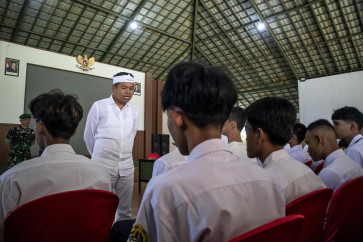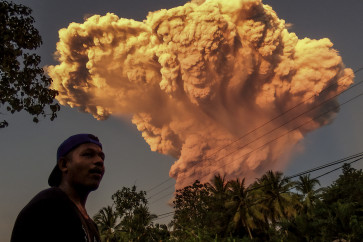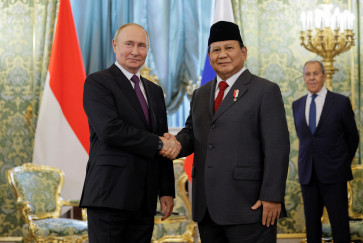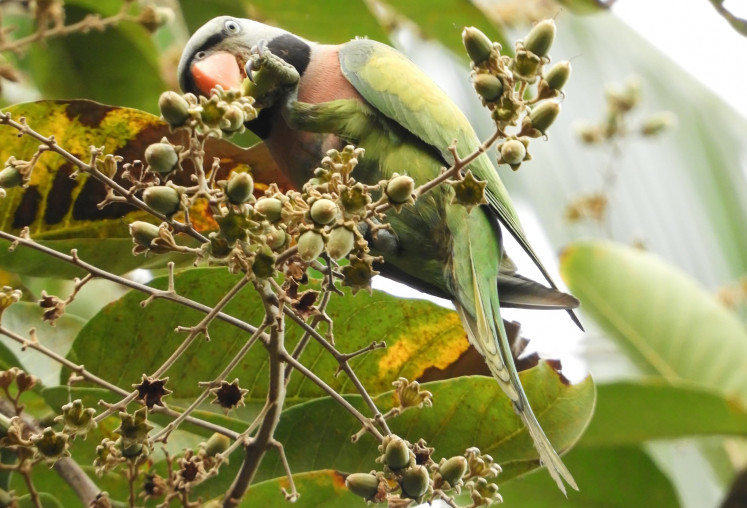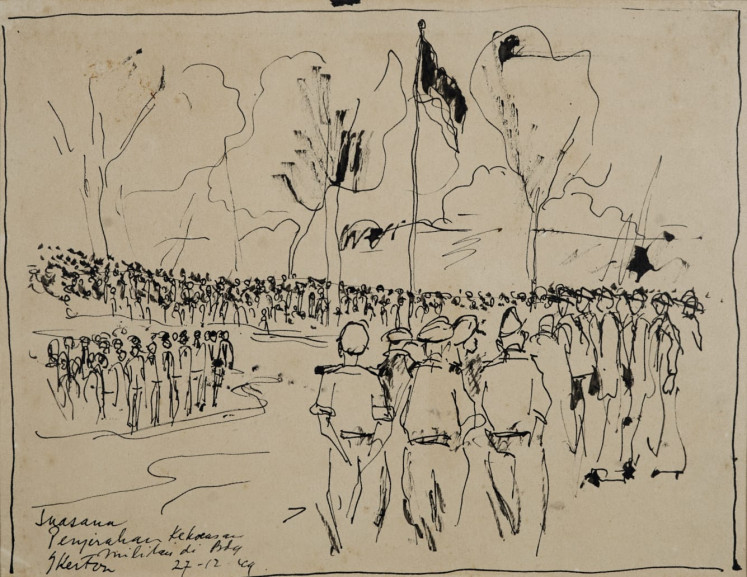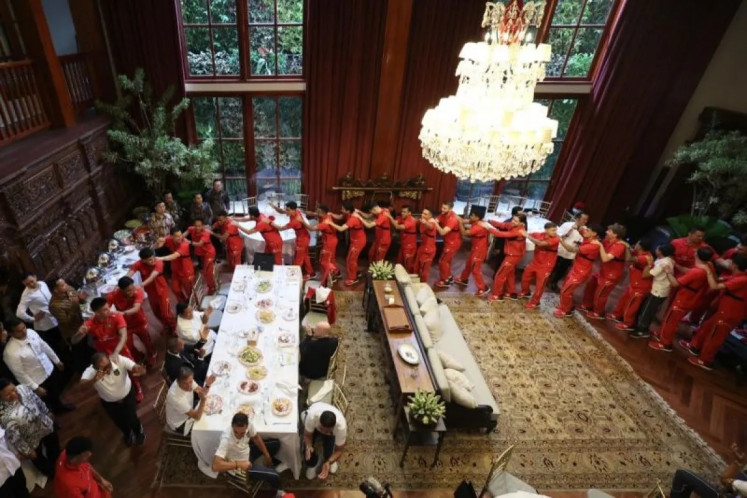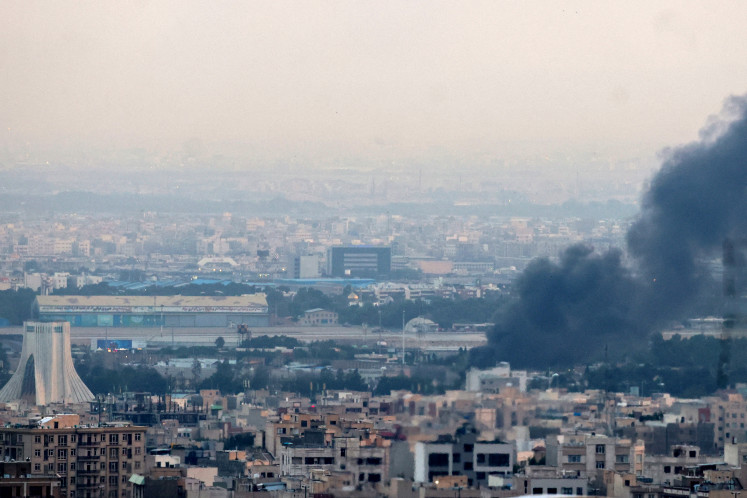Popular Reads
Top Results
Can't find what you're looking for?
View all search resultsPopular Reads
Top Results
Can't find what you're looking for?
View all search resultsThe last Mentawai tattoo bearers
Indigenous people living in the Mentawai Islands regency of West Sumatra are known for their traditional tattoos, but as time progresses, the art of tattoo is slowly fading away.
Change text size
Gift Premium Articles
to Anyone
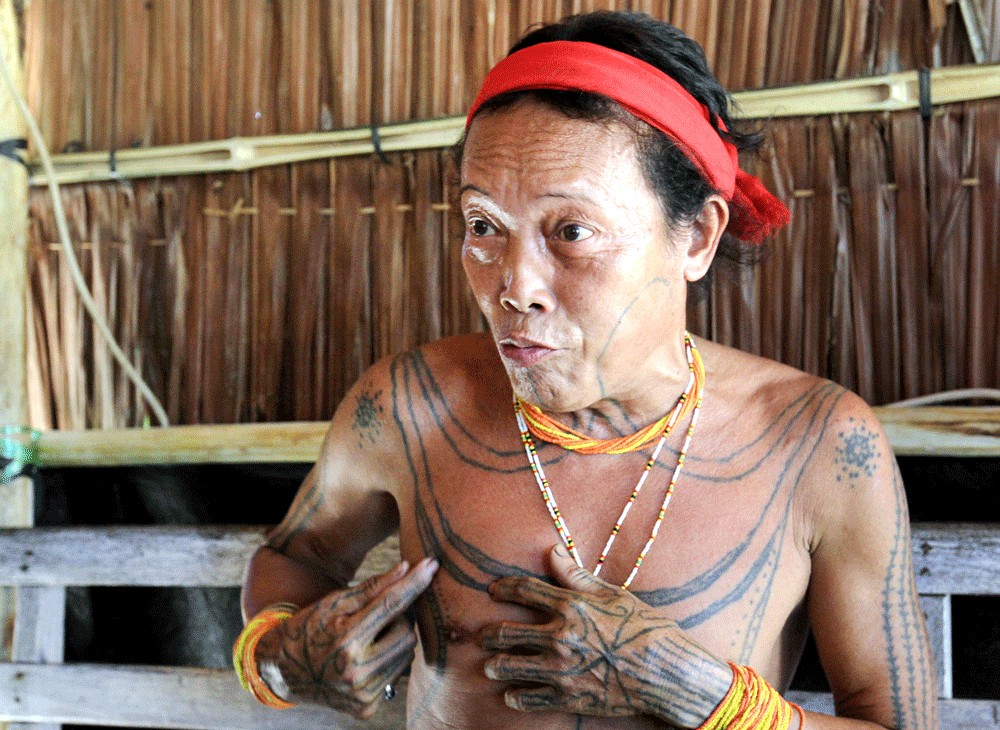 Guardian of tradition: Aman Lau lau Manai, also known as Josep Teuki Ogok Salakirat, 62, explains the meaning of tattoos on his body. (The Jakarta Post/Syofiardi Bachyul Jb)
Guardian of tradition: Aman Lau lau Manai, also known as Josep Teuki Ogok Salakirat, 62, explains the meaning of tattoos on his body. (The Jakarta Post/Syofiardi Bachyul Jb)
T
he indigenous Mentawai people populate the islands of Siberut, Sipora, North Pagai and South Pagai. Today, only Siberut still has a fairly large number of tattooed islanders, though estimated at less than 100.
On the other three islands, only one to four people aged above 80 are tattooed. Among South Pagai’s population of around 9,000 people, just one woman is left with traditional tattoos on her body. She is 87-year-old Siboirot Tubu Sakeru.
Siboirot, the last tattoo bearer on South Pagai, was saved by her grandchild when huge waves devastated their village on Oct. 25, 2010. Now, she lives in a house built for victims of the tsunami in Kinumbu hamlet, Bulasat village.
While her vision is blurred, her memory is still sharp. Speaking only in the Mentawai language, Siboirot said she was educated at a Dutch church-run primary school before dropping out in third grade during the period of Japanese occupation.
“As a dropout at 10, I was tattooed, along with a friend, by a village tattooist without any payment or ritual,” she told The Jakarta Post.
“Most boys and girls above ten had their bodies tattooed for the sake of tradition. Widespread traditional values had it that those who had no tattoos did not belong to the Mentawai community,” she added.
Siboirot was first tattooed on the back of one of her hands, followed by the other and then her arms, neck, back and chest, at a week’s interval between body parts.
“The weeklong break was enough to heal the bleeding skin and relieve the pain,” she said.
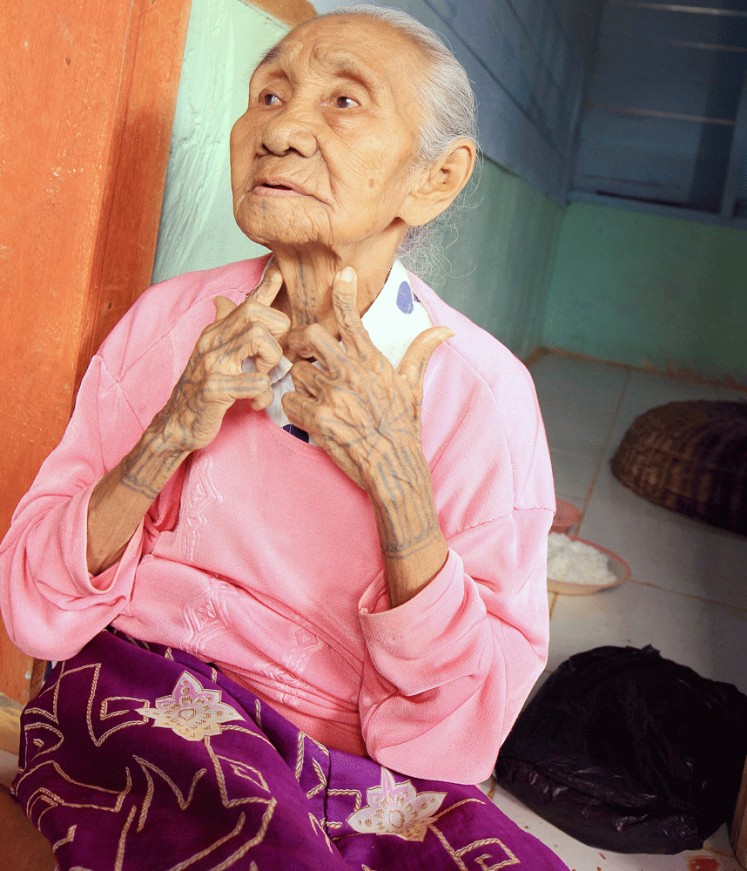
Traditional Mentawai tattoo artists draw their tattoos by using a needle that they beat with a small mallet. The tip of the needle is dipped into ink made from sugarcane fluid and soot.
A strict ban on Mentawai’s tattooing tradition was imposed by Protestant missionaries during the Dutch colonial time.
More Mentawai traditions were banned after Indonesia gained independence, with government restrictions on Mentawai cultural practices seen as primitive, such as men having long hair or sharpening their teeth and sikerei(shaman) practices.
Siboirot recalled police or military personnel often capturing tattooed Mentawai people and later imprisoning them in Sikakap, a town on North Pagai Island.
“I’m the oldest of four siblings. My younger sister was caught by the police when being tattooed on the chin and was taken to Sikakap, where she was jailed for a year. I escaped by fleeing into the woods,” Siboirot said.
Due to the pressure from the Javanese-centric government, Siboirot’s other siblings and most of the indigenous Mentawai people decided to no longer get tattoos.
Consequently, the next generation of the Mentawai people during Siboirot’s youth has no more tattoos, and South Pagai’s tattoo art has practically vanished.
Meanwhile, the last tattooed men on North Pagai Island, separated just by an 800-meter strait from South Pagai, are also above 80.
Data collected by the Post show that two years ago, four tattooed people were left on North Pagai, aged 82 to 85, three of whom live in Sikakap district with only hand to elbow drawings and no sharpened teeth. Another man, 82, lives in North Pagai district.
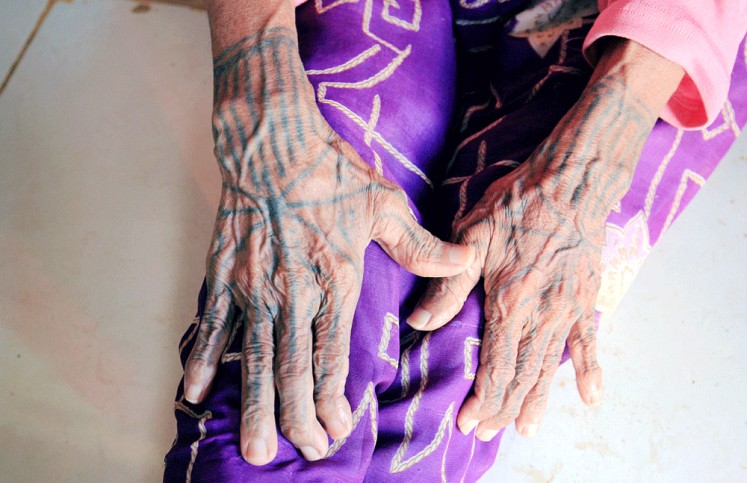
Leo Marsan, a Sikakap resident, said his grandmother Sanna Sagugurat belonged to the last generation having tattoos all over her body and sharpened teeth in Saumanganya village. But she died in June 2015 at the age of 86.
“The following generations no longer had full tattoos, because after the Protestant faith entered Pagai on June 16, 1916, a ban was enforced on everything connected with the local arat sabulungan faith, from tattooing to the sharpening of teeth,” he added.
On Sipora Island, the only man with tattoos covering almost the entire body is aged over 80. J. Sababalat is a resident of Minga Sibagau hamlet in mara village.
Several others who are some years younger have smaller tattoo designs.
One who has just one tattooed spot, namely on his right ankle, is Salum Sababalat, 76, a resident of Sibagau village, Sipora district. As a first-grader aged seven, he and two friends were tattooed by his father, who was a tattoo artist.
“There were sketches for tattoos to go on both of my ankles and hands, but when my father began his tattoo work on a spot of my ankle, it felt very painful, so I kicked over the coconut shell containing the tattoo ink and ran away,” Salum told the Post.
From then on, he fell ill for a month, which was regarded as a consequence of violating the taboo tradition by kicking the equipment. It took two big pigs to invite a sikerei to treat him, after which he recovered.
Salum still remembers when, in 1954, two boats carried groups of the Mentawai people from Sipora to Siberut as part of the ritual to visit their land of origin. They turned out to be the last group of people conducting the journey.
“Two weeks after returning to Sipora, the government with police and soldiers burned all our ritual tools and equipment; whoever dared to resist would be arrested and sent to prison,” he said.
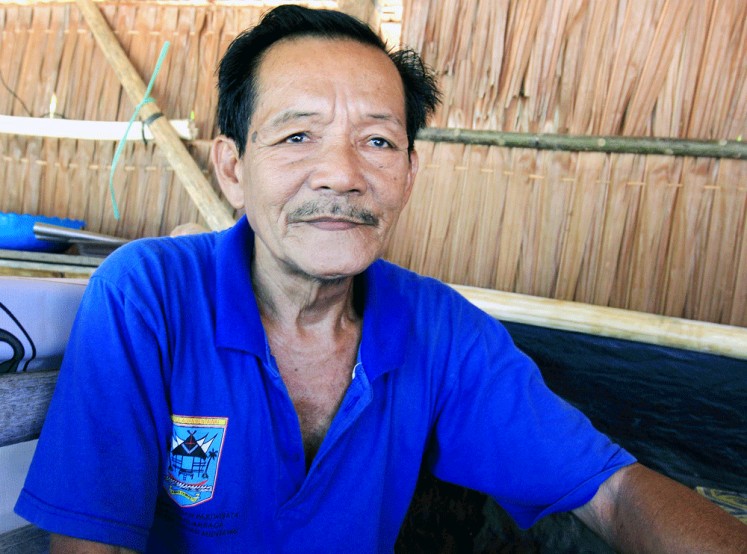
Siberut Island is the cradle of the Mentawai culture. Unlike Pagai and Sipora, where the Protestants arrived earlier, Siberut was subjected to a massive ban on what the government called “primitive culture” much later.
Traditions on the big island, where most of the ethnic people live in dense forests, survived longer. However, even here the people still bearing tattoos are more than 40 years old. Those who are more senior have stories to tell of resistance to the cultural restrictions.
Aman Lau Lau Manai, whose full name is Josep Teuki Ogok Salakirat, 62, is a famous community figure from Siberut.
The man, who is also a shaman and tattooist, is a familiar face in the media for being often used as a “model” of a Mentawai native. The local tourism office has frequently invited him to art and cultural programs.
He has been struggling for the preservation of Mentawai culture in its homeland, after witnessing how government authorities burned sikerei paraphernalia like the jejeneng (clock), necklaces, the bakkat katsaila (place of offerings) and skulls from hunting.
In the mid-1980s, assisted by Charles Lindsay, a San Francisco born ethnographic photographer and naturalist who entered the forest of Siberut in 1984, he was taken to meet with the West Sumatra governor in his kabit (loin cloth) with a tattoo-covered body and long hair. He conveyed his protest against the ban on Mentawai culture.
Based on his complaint, the governor finally issued a letter lifting the ban on Mentawai’s customs and traditions, because they constitute the faith of the community. Before long, he and a group of 12 people were invited to Jakarta to present Mentawai dances in a program attended by then-president Soeharto.
“But as a result of the repression, some cultural instruments are hard to find at present, and our children wear clothes for adjustment [to modern life], but I must admit that today’s garments are very practical, as they aren’t difficult to put on,” Aman said.

